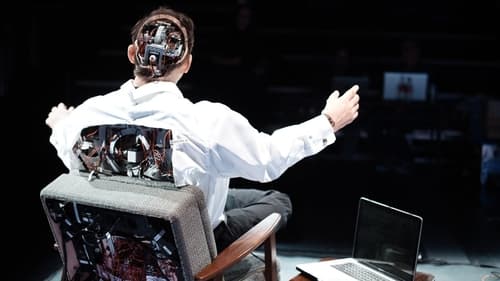
Production Design
We mostly think of robots as work machines, as efficient and precise executors of tasks. In German industry, they barely look like people, to avoid emotional complications. Unlike in Asia, where humanoid robots have already been developed for some time, for example for care-work or as sex partners. The external similarity to human beings makes the acceptance of machines easier. However, if the machine is too similar to a human, we begin to feel mistrust: what is human, what is machine? Japanese robotics researchers call this weird similarity the “uncanny valley”. For his play, Stefan Kaegi works with a writer and playwright for the first time: Thomas Melle allowed an animatronic double of himself to be made. This humanoid takes the author’s place and throws up questions: what does it mean for the original when the copy takes over? Does the original get to know himself better through his electronic double? Do the copy and his original compete or do they help each other?

Director of Photography

Director
Welcome to the world of an extraordinary man who has everything he wants, but is missing the one thing he needs. Mirco Kuball: an ultra-wealthy, flamboyant, sophisticated and outspoken man who just happens to have down’s syndrome. This touching film explores an unexpected life. It moves through the castle where he lives; the massage parlours and restaurants where he's indulged; and the theater where he performs. But, beneath the opulent showman, lies a man like any other, who realises that beyond shelter, food, and companionship, nothing else counts.

Color Grading
The story of Pirimze is told through the architecture of a building in Tbilisi known as Pirimze. The building touches upon the 1970s, when this luxuriously designed edifice served as an exemplary design in Georgia. In the 1980s the building became the site of incredible amount of wealth creation. It also talks about the 1990s, when it decayed and operated in an improvised and chthonic way. After the independence of Georgia, just as the Soviet Union collapsed and broke up into different countries, Pirimze ‘exploded’ and smaller workshops with identical names sprung up in the surrounding neighbourhood, where the ‘debris fell.’ We visit these workshops and observe fascinating skills performed by craftsmen who used to work in the Pirimze. We also visit the newly renovated business centre Pirimze Plaza, which replaced Pirimze and question the need and motives of this transformation.

Sound
The story of Pirimze is told through the architecture of a building in Tbilisi known as Pirimze. The building touches upon the 1970s, when this luxuriously designed edifice served as an exemplary design in Georgia. In the 1980s the building became the site of incredible amount of wealth creation. It also talks about the 1990s, when it decayed and operated in an improvised and chthonic way. After the independence of Georgia, just as the Soviet Union collapsed and broke up into different countries, Pirimze ‘exploded’ and smaller workshops with identical names sprung up in the surrounding neighbourhood, where the ‘debris fell.’ We visit these workshops and observe fascinating skills performed by craftsmen who used to work in the Pirimze. We also visit the newly renovated business centre Pirimze Plaza, which replaced Pirimze and question the need and motives of this transformation.

Editor
The story of Pirimze is told through the architecture of a building in Tbilisi known as Pirimze. The building touches upon the 1970s, when this luxuriously designed edifice served as an exemplary design in Georgia. In the 1980s the building became the site of incredible amount of wealth creation. It also talks about the 1990s, when it decayed and operated in an improvised and chthonic way. After the independence of Georgia, just as the Soviet Union collapsed and broke up into different countries, Pirimze ‘exploded’ and smaller workshops with identical names sprung up in the surrounding neighbourhood, where the ‘debris fell.’ We visit these workshops and observe fascinating skills performed by craftsmen who used to work in the Pirimze. We also visit the newly renovated business centre Pirimze Plaza, which replaced Pirimze and question the need and motives of this transformation.




